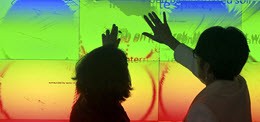SCELC
Better understand your collection and how to expand it
The Statewide California Electronic Library Consortium (SCELC) includes a wide variety of libraries that collaborate to better share and expand their collections. In late 2016, SCELC began a shared print project using GreenGlass® with 14 pilot libraries. The project aims to identify uniqueness and overlap in SCELC print collections, to develop processes for sharing books among member libraries, and to promote the long-term sustainability and availability of SCELC collections. Hannah Thomas, Head of Cataloging at Saint Mary's College, said that shared print “is part of a trend regionally and nationally.”
Laura Turner, Head of Collections, Access, and Discovery at the University of San Diego’s (USD) Copley Library, joined the shared print project to help scholars in the community. “They really value our print resources and have actively participated in the selection of many of those resources,” but also, “they have transformational physical needs for the library itself.” Like many libraries, USD joined SCELC’s shared print project to balance these two needs.
The SCELC libraries submitted data to SCS’s GreenGlass software, which helped them analyze their collections. Caroline Muglia, who serves as the Co-Associate Dean for Collections and Technical Services, Head of Resource Sharing, and the Collection Assessment Librarian at the University of Southern California (USC), which is SCLEC’s largest member, initially had doubts about GreenGlass. “I thought this tool would be helpful for smaller or mid-range institutions, but certainly it wouldn’t be able to really harness everything from our collection,” she admitted. “I was proven wrong almost immediately.” Many libraries echoed Laura’s comment that GreenGlass “provides this value on a collaborative level that we really wanted as part of the project. But surprisingly enough, it has [also] allowed my library to look at our own collection and drill down to levels that we weren't aware we'd be able to.”
“GreenGlass gives us an opportunity to take a step back and look from a more macro approach where our collection’s going, where the major gaps are, and then what we could be doing as collection developers to strengthen the collection to support the research and scholarship at the university.”
--Caroline Muglia, Co-Associate Dean for Collections, Head of Resource Sharing, and Collection Assessment Librarian, University of Southern California
“I'm quite interested in seeing what stock we have to share with other libraries and vice versa,” said Occidental College’s former Head of Collection Services, John De La Fontaine. “One thing I found quite useful was links to HathiTrust [in GreenGlass]. That was quite useful because we can share our collection in different ways.” Laura added, “The WorldCat® connection to it is a critical element.” Caroline also enjoyed working with fellow SCELC libraries. “Relying on that cohort and their expertise, or even just learning from their mistakes, has been really, really helpful,” she said.
Many of the libraries were surprised to see how little overlap there was within their collections. “We're a small liberal arts college, but you'd expect that we have pretty much the same books as a lot of other colleges,” said Hannah. Instead, they found “each of the libraries has a lot of titles that aren't held in any other library.” Armed with this knowledge, the libraries can make better informed retention commitments. John had recently conducted a deacquisition program at his library, but he noted that GreenGlass provided him with more detail about the titles that still remain. “It let me know exactly what was unique to my collection and the various holdings throughout our area, California, and the nation at large,” he said.
The pilot libraries have applied what they learned from SCS and GreenGlass both to sharing within the group and to making better collection development decisions. As Hannah noted, “Our retained collection is only 25,000 titles, but we're getting access for reciprocal borrowing from a collection of over a million.” John agreed, “I would like to see an increase in resource sharing throughout our SCELC group, and this is an excellent tool to assist us.” Caroline especially appreciated what she was able to learn about USC’s collections. “To really see your whole collection and understand the gaps and also the strengths is, for us, an outstanding reason to participate in this initiative,” she said. “We're taking home all of the stuff that we are learning, and applying it to our collection generally. It has a really broad application.” Pleased with the success of the pilot program, Hannah said, “The libraries in the first cohort of the shared print project are very eager to see a second cohort start to join. We're looking to build a very big shared print project with lots and lots of books!”

- Brings together independent nonprofit academic and research institutions to foster innovation and collaboration in the acquisition and effective use of library resources and services
- Comprised of 112 member institutions and more than 200 affiliate institutions of all sizes
- Members support approximately 500,000 students with more than 21 million volumes and nearly 2,500 electronic resources
Related stories

Demonstrate the value of your special collections
Learn how Saint Anselm College analyzed its special collections to identify rare items and strategically focus collection development.

Renovate for today's information environment
See how Connecticut College combined a collection management project with a building renovation to offer modern study, collaboration and technology spaces to students and faculty.
